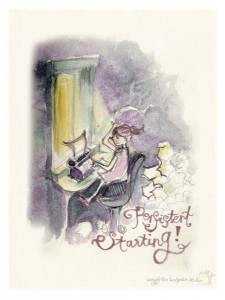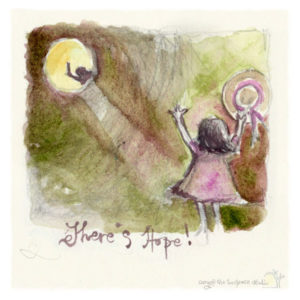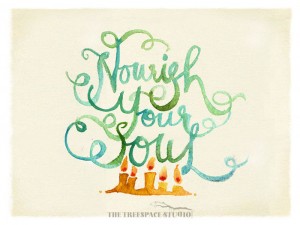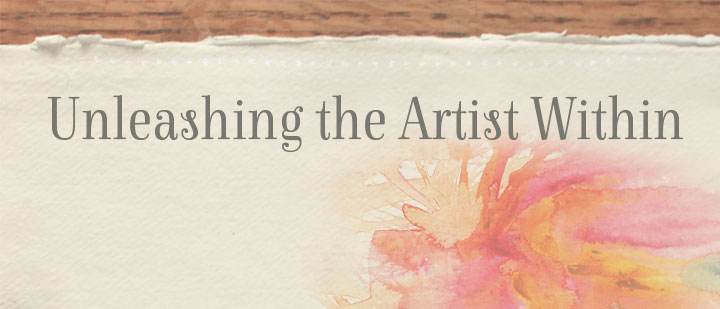A little note: for the most part details in this post addresses the visual artist, although the overall concept applies to artists from other genres.
My dear readers, this is an impromptu post I wrote as a response to a beautiful and touching message I recently received from a young woman still in college who wrote to tell me she loves my work so much that it’s inspiring her to switch to an art major, and she wanted to know what she can do to draw like I do.
I can’t express enough how incredibly, incredibly humbled, flattered and moved I am by this message. I started thinking about what to reply to her, this yet malleable, beautiful mind and soul on the precipice of adulthood, and realized it was just not enough to write a few paragraphs. There’s too much responsibility, too much potential for miscommunication and too much back story and heartache in my own journey to advice her in a quick message.
So I thought, why not write a blog post about it? When I was still running my stationery studio, I often received emails from young art interns and students fascinated with my journey/process as a creative entrepreneur but I’ve never really expounded on it.
The reason? It’s because my journey has not been seamless, perfect and fairytale-like. In fact it’s anything but. And to tell it meant to be vulnerable about it, to share details that perhaps I wasn’t quite ready to see for myself.
The good news is I feel that I’m finally in a place that I can open up. So here’s my very long answer on how my story shaped my artistic skills and vision and hopefully it will help her shape her own unique journey.
………………………………………..
 Here’s the raw truth: my voyage as a creative professional was not a straight, clear path, and is still ever-evolving. In fact, it has been fraught with derailments. I’ve often admired those with a startling, dazzling vision for what they wanted to be when they were young that they were able to nurture into a prolific, successful career well into adulthood. And for awhile, I thought that was me. Why? Because as a child I drew a lot, I drew everyday for hours on end. It felt like I had this immense imagination that just needed to be poured into something tangible. I read and drew. Read and drew, for most of my childhood. Thousands and thousands of hours of practice.
Here’s the raw truth: my voyage as a creative professional was not a straight, clear path, and is still ever-evolving. In fact, it has been fraught with derailments. I’ve often admired those with a startling, dazzling vision for what they wanted to be when they were young that they were able to nurture into a prolific, successful career well into adulthood. And for awhile, I thought that was me. Why? Because as a child I drew a lot, I drew everyday for hours on end. It felt like I had this immense imagination that just needed to be poured into something tangible. I read and drew. Read and drew, for most of my childhood. Thousands and thousands of hours of practice.
Then one day, an aunt of mine tipped me off that I could combine my artistic skill and love for science into a profession that could make me lots of money. Oh my! What a concept! I must have been 10 or 11. I held on to this dream, and clung to it for 2 decades. I went to architecture school and survived the grueling curriculum, graduating with honors. Architecture school was the perfect blend of multi-disciplinary design, creativity, art and culture that I love and I flourished in that milieu.
When I graduated I dove into the working world and slowly began to discover that what I loved most about school was not at all the reality of practicing as an architect. It was a challenging 7 years of trying to fit into an architect’s mold-the obsession with perfection, details, rigid design guidelines, grueling computer hours. I don’t regret a single moment that 12 years as an architect in training brought me. In retrospect it helped me hone a skill set that would only make me a better artist while laying foundation for a perspective uniquely mine -the art of materiality, drafting and dimensional design, of creating within a project brief and datelines, spatial perspective and experience, the magic of collaboration as well as the social and real-world impact a creation can have.
 When it soon became painfully clear to me that the traditional architect’s role was like a beautiful dress all wrong for me-I was too loose, unconventional and conceptual for it, I knew I had to leave it. I didn’t enjoy enough the parts that were important and deep down I was beginning to realize that I really needed to in order to succeed in this profession. I left, heart-broken, and for the next 4 years, I dialed into my soul and did a dual dance of illustrating and designing. I started the first 2.5 years designing and illustrating hand-painted event stationery, combining my love for materiality and drawing, this phase was very well received. The next 1.5 years I switched my focus to brand visioning and design before I finally stopped resisting my heart’s calling.
When it soon became painfully clear to me that the traditional architect’s role was like a beautiful dress all wrong for me-I was too loose, unconventional and conceptual for it, I knew I had to leave it. I didn’t enjoy enough the parts that were important and deep down I was beginning to realize that I really needed to in order to succeed in this profession. I left, heart-broken, and for the next 4 years, I dialed into my soul and did a dual dance of illustrating and designing. I started the first 2.5 years designing and illustrating hand-painted event stationery, combining my love for materiality and drawing, this phase was very well received. The next 1.5 years I switched my focus to brand visioning and design before I finally stopped resisting my heart’s calling.
So what have I learned from my experiences thus far?
Every single one of them has been instrumental in the evolution of my own artistic voice, one that is ringing so loudly now that I can no longer deny it by playing in the fringes of being an artist, i.e illustrating, designing, working with other artists/artisans.
Art is soul work. It really is. But the problem with soul work is that it takes time, heartache and years of exploration before your inner and outer selves align. And because it takes time, the best thing young aspiring artists can do for themselves is to develop the discipline and skill set-their outer self, that will carry them while these two worlds move toward becoming one. I don’t believe in shortcuts.
While there are many ways and paths to being an artist, here’s mine: I truly believe that a great artist, one with the ability to shatter minds and evoke deep emotional response (something all artists should be striving for) has strong vision, a distinct way of seeing and being in the world that can only come from deep inner work and observation over time, coupled with vigorous technical skill to pull this vision off in a really powerful way. It’s why the artistic greats of the past had apprenticeships. Why they learned how to paint like their mentors before even creating unique pieces of their own.
It’s one of the most important things I learned during my architectural days: the more technical/engineering knowledge you have, the better an architect you can be. The same goes for compelling artistic expression-develop your technical skills through applied practice and action, have a solid understanding of your medium and technique and of color theory (if you’re a visual artist). Emulate those you love at first, then fearlessly create your own vision, your particular standard of beauty or method of rule-breaking.
Take every opportunity you can to practice your skills, even if the work is not glamorous or exactly aligned with your dream. I’ve had to learn this the hard way and I’ve fought myself the whole time. Because labels don’t matter, it’s what you’re doing that counts.
This is so important I’ll say it again: labels don’t matter, because if they do, that’s just the ego blustering.
 And most importantly, while you are honing your skills, nurture your soul, your inner voice, your storytelling lens. Develop a deep curiosity for what fascinates you, indulge in it, play in it, explore. Surround yourself with like-minded folks. Travel often. Hike. Swim. Make. Build. Love. Do whatever it takes to expand your imagination and refine your world view.
And most importantly, while you are honing your skills, nurture your soul, your inner voice, your storytelling lens. Develop a deep curiosity for what fascinates you, indulge in it, play in it, explore. Surround yourself with like-minded folks. Travel often. Hike. Swim. Make. Build. Love. Do whatever it takes to expand your imagination and refine your world view.
And finally, work hard towards bringing your inner (soul) world and your outer (skill) world together. It may be a lifelong journey. But it can be a beautiful one.
………………………………………..
Reality Check:
 One last tip. I feel duty bound to warn that the reality of being a working artist is harsh. I highly recommend being realistic about what it means to be an artist. It can really mean years of barely scrapping by, it can mean a love hate relationship with resistance and anxiety that lasts a lifetime. It can mean always having a second job to pay the bills. Or it can mean loving every single minute of what you’re doing and not quite believing you are being paid to do it. Arm yourself with an arsenal of tools to help you in this journey:
One last tip. I feel duty bound to warn that the reality of being a working artist is harsh. I highly recommend being realistic about what it means to be an artist. It can really mean years of barely scrapping by, it can mean a love hate relationship with resistance and anxiety that lasts a lifetime. It can mean always having a second job to pay the bills. Or it can mean loving every single minute of what you’re doing and not quite believing you are being paid to do it. Arm yourself with an arsenal of tools to help you in this journey:
I like:
- Anything by Eric Maisel
- The War of Art by Steven Pressfield
- Art of Fear by David Bayles
- I’d Rather be in the Studio by Alyson B. Stanfield
- Creative Inc or Tara Gentile for creative business modeling
- Get yourself an art/creative MENTOR, talk to those who successfully do it for a living!
- Keep a list of artists you admire or whose career you aspire for, observe and study them
- Stay up to date of the myriad ways to make a living as an artist!
Nurturing your Soul:
- Collect imagery to hone your unique way of ‘seeing the world’, your storytelling lens. Pinterest or the good old bulletin board helps.
- Visit museums and galleries often
- Read and watch all kinds of movies and plays widely
- Travel often. LIVE. Broaden your horizons.
- Read Julia Cameron’s book The Artist’s Way for ideas on nurturing your artist self
- Maintain a child-like curiosity
- Connect with other creative kindred spirits that you can share ideas and critique work!
Building Your Skill Set:
- This is an interesting, somewhat maverick post on how to get an art education for just 10k. He lists some really interesting alternative resources!
- Drawing skills? Practice. Practice. Keep a sketchbook or art journal and draw as much, as often as you can.
- Take live drawing class locally as often as you can, once a week if possible.
- Take a job as an artist or in any capacity that allows you to practice your craft. Remember, labels don’t matter, it’s the work you can do that counts. A great advanced reading on this is a book by 99U called: Maximize Your Potential.

